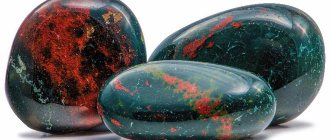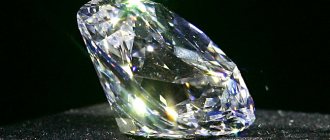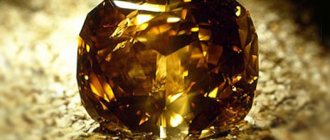Jewelry art of Ancient Rus'.
Temporal rings or Useryaz are very famous jewelry items among the ancient Slavs , which at the same time served as amulets and amulets. There are a great variety of types of temporal rings, and no less of them have been found than lunar rings. Temple rings were women's jewelry that were woven into the hair at the temples. There were often several of them, the number reaching six or more. Bronze, silver, and gold items are found. Often beads were strung on rings - amber, glass, stone, and once archaeologists even came across a cherry pit. They are found almost all over the world, starting from the layers of the Bronze Age. Some were even found during excavations of the legendary Troy. But the largest number was discovered on the territory of ancient Rus' in the 8th-12th centuries, so it is the Slavs who are credited with the special flourishing of such jewelry. They are found both in village mounds and in large cities.
Jewelry at that time had two purposes at once. The first is beauty, and that is why women have always had much more jewelry and various pendants, rings, earrings, etc. than men. In ancient times, women were treated with almost reverence. In ancient times, a woman was not only a woman in labor who must bear and raise offspring, but also a priestess at the temples, a knowledgeable mother, a keeper of magic, a prototype of the Mother of the Raw Earth in human form. The second is the ritual and religious meaning.
In Ancient Rus' there was a belief that evil spirits could influence any person if he was not protected by special amulets. The body is always protected by a shirt, a dress with protective symbols embroidered on them, bracelets on the wrists, necklaces on the neck, a special bandage on the forehead, and the temples, like a naked place, were protected with just such rings.
Unfortunately, the term by which these amulets were called in ancient times has not reached our days, and their name is only the assumption of scientists.
From some sources (Dahl's Dictionary, church lists) we can find out that the temple rings were called “ Useryaz ” - ear decoration, earring, temple.
As already mentioned, a wide variety of species of temporal rings was found during excavations. However, wire rings are the most widely used (most likely due to their low cost and ease of manufacture). The wire rings were of small diameter with the ends wrapped in loops. Also widespread were head rings on which pendants in the form of a grapevine were attached; two- and three-bead rings; seven-rayed, bracelet-shaped. All rings are divided into several types: wire, bead, shield, beam, blade. In ancient times, by the appearance of the temporal rings, it was possible to very easily distinguish representatives of different tribes, as well as the position of the girl/woman in society.
Wire:
Seven-ray rings. Seven-rayed, like others, are divided into several subspecies: Temporal rings with a smooth shield or classic, Temporal rings with an arch on the shield and with five denticles along the upper edge of the shield, Temporal rings with rays in the form of a trefoil and with an ornamented shield or Desninsky type. Ray and blade decorations were cast.
Five-point rings:
Bracelet-shaped rings. These are wire rings that had a crescent shape and knotted ends.
Scutellaceae and Rhomboscutaceae. Such rings are most often found in the settlement areas of the Ilmen Slovenes. Bronze rings, where there are thickenings in the form of rhombuses from 2 to 5 pieces. They were made from wire, which was forged into plates. Over time, the patterns on the shields changed and this is what helped archaeologists and historians determine how the tribes settled. Openwork and very filigree works of ancient Slavic craftsmen are often found.
Do you knit or sew clothes? Do you have your own workshop or craft store? Please note that you can buy yarn wholesale in the Vultex online store. Large selection of yarn and knitting needles with delivery.
Blade:
Beaded. They are distinguished into single-bead, three-bead and multi-bead.
Curly and lunate-shaped (lunar) temporal rings. Lunnitsy absorbed both elements of curly rings and women's jewelry, which were called Lunnitsa.
Scientists claim that such decorations are not originally Slavic. Long before this, they were used throughout Europe, in Scandinavia and Byzantium. The Slavs, sometimes encountering other peoples, over time adopted the decorations for themselves. And yet, the temple rings that our ancestors used are very different from the rings of other peoples, since the Slavs gave them a special personality, taking into account their beliefs and traditions. By the 8th century, these rings were already considered typically Slavic jewelry.
In most cases, researchers believe, the temple rings were woven into the hair, but were also suspended from the corolla, a girl’s headdress. In addition, entire necklaces were made from rings, which framed the entire head or were strung on a strap and encircled the head. In the case when the temple rings were attached to the headdress, they were not located near the temple, but at the level of the ears and seemed to cover them. In some places such products were even inserted into the earlobe, like earrings.
It is also interesting how the temple rings were worn depending on the age of the girl or woman. Girls and teenagers practically did not wear rings or wore simple ones, hand-bent from wire. Grown-up girls, brides and mature women wore the best rings at their temples. Older women refused rings, apparently in favor of simply passing them on to a new generation.
Temporal rings were woven into the hair something like this: the hair was combed in a straight parting from the back of the head to the temples. After this, pigtails were braided on both sides, approximately the thickness of the little finger. The pigtail went from the temple behind the ear and consisted of three strands. The first ring, the smallest one, was woven into the upper weave of the braid near the temple, and the next one, which was larger, was woven a little lower. Up to four rings could be woven this way.
To the origins: “Russian patterning” - the jewelry art of Rus'
In this article I would like to turn to the history of jewelry art of Ancient Rus', in particular to the “Russian pattern”. It is likely that those things that were fashionable several centuries ago will inspire us, modern authors, to create jewelry in the national Russian traditions!
What is “Russian pattern” ? This term refers to the bright, original art of gold and silversmiths of Ancient Rus' of the 16th-17th centuries. This direction combines motifs of the art of Byzantium, East and West. Russian craftsmen partly modified the tradition of making jewelry, which had been known since Byzantine times and originated in Ancient Rome: they colored jewelry with precious enamels and precious stones, giving them a pronounced national flavor.
The name “Russian Pattern” surprisingly accurately conveys the nature of the jewelry of that time, which was distinguished by the splendor of its ornamental decor and extraordinary richness of colors. The jewelry used many richly colored stones of the highest value - sapphires, rubies, emeralds, amethysts, turquoise and, of course, the all-time favorite pearls. The abundance of floral filigree ornaments, the widespread use of multi-color enamel, deep-toned niello, and embossed embossed patterns make the products particularly decorative. The motifs of the openwork pattern, decorated with stones and enamel, are reminiscent of pomegranate flowers, tulips and other plants unfamiliar in the north.
An important role in women's ceremonial attire was played by cassocks - long pearl threads that descended to the shoulders, which were hung from headdresses symmetrically on both sides of the face.
The earrings were especially varied and original in shape . Judging by the shape of the lock, some rather massive decorations were not worn in the ears, but were attached to the headdress.
The most vivid features of the “Russian pattern design” were manifested in the works of Moscow goldsmiths: gold earrings decorated with filigree with multi-color enamels, stones and pearl pendants. Colorful, elegant, with clearly defined symmetrical shapes, these earrings personify the ideas of beauty characteristic of that time and are an example of artistic perfection.
Rings and rings were also universally loved. Sometimes, on especially special occasions, rings were put on all fingers. Emeralds, rubies, sapphires, turquoise, pearls in a spectacular frame looked like flowers. Signet rings and rings with an eight-petal rosette decorated with small stones and small floral designs were popular.
A necessary addition as decoration were precious buttons, buckles, pins and, of course, gold and silver chains, which were often assembled from flat elements or from curls of flattened filigree and decorated with white or blue enamel.
The gold and silversmiths of the 16th-17th centuries continued the artistic traditions of their predecessors and, accumulating in their work the experience of skilled jewelers of Byzantium, and often borrowing some technical techniques and motifs of the art of the East and West, they at the same time introduced their own special ideal into the jewelry making beauty and created a bright, original style of Russian art.
Over the course of many centuries, Russian jewelers have repeatedly turned and continue to turn to the work of the masters of “Russian pattern making,” creating masterpieces of the Russian style.
Literature: Shatalova I.V. Jewelry styles. — 2004.
The art of jewelers of ancient Rus'
At the end of the 15th and beginning of the 16th century, a most important period began for Russia. The time of the Mongol-Tatar yoke ended and a centralized state was formed. Moscow has become the center of the country's political, economic and cultural life. Court ceremonies required magnificent decoration, which became an incentive for the rapid development of jewelry. Artists, carvers, gunsmiths, embroiderers and foundry workers came to the capital from all over the Russian land. In addition to Russian craftsmen, foreign artisans of various specialties also worked. Under Ivan IV the Terrible there were especially many of them, and the German Settlement was formed. The collaboration of Russian and Western European craftsmen had a huge impact on the jewelry art of Russia at that time. At the same time, the creativity of Moscow jewelers retained its national character.
The work of Russian jewelers could be seen during special embassy ceremonies, which were established by Ivan the Terrible and lasted until the end of the 17th century with only a few changes.
Foreigners who visited Russia left rave reviews in their notes about the work of Moscow jewelers. The luxury of the attributes of royal power - a golden scepter strewn with precious stones, the richest porphyry, a golden diadem and the throne of the Russian Tsar - brought foreigners into indescribable delight. And the gold clothes of the servants, which they changed three times during dinner, aroused amazement and envy. In general, the royal court, even under subsequent kings, was distinguished by pomp and luxury. In Russian history, periods of rise alternated with decline. An example of this is the Polish-Swedish intervention of the early 17th century, during which the Kremlin storage facilities were pretty much emptied. At the end of 1612, when the enemies were driven out, a gradual revival began.
Jewelry art in Rus'
Jewelry art... This concept is associated with museum collections of the largest repositories of antiquities around the world, including products made of precious metals and precious stones, which, sparkling brightly and shimmering in the light, fascinate with the mass of gold and silver, attract attention with the variety of techniques of execution and decoration, elegance of forms , born from the imagination of the masters. And these associations are not accidental. They have been formed over thousands of years of the history of jewelry. In modern dictionaries and encyclopedias, jewelry art is interpreted as a type of decorative and applied art associated with the production of artistic jewelry, household items and other products made of precious metals, often in combination with precious and semi-precious stones, as well as artistic products from other metals, made with a special craftsmanship and sophistication. The origins of jewelry go back centuries, when jewelry was still dualistic in nature, performing a dual function - decoration and symbol, being a distinctive sign of the clan, tribal or social affiliation of its owner. For many centuries, jewelry through bright visual images created a kind of business card of its owner. At the same time, from ancient times, people sought to protect themselves from disasters and adversity and did this with the help of magical signs: in ancient times, people wore amulets, which, according to their ideas, contained magical power. But people not only believed in the power of these amulets, but also admired them. I admired the shine and beauty of the metal and stone from which they were made. At first, copper and bronze were used to make amulets and various amulets; later, preference was given to gold and silver, which had very valuable properties. Unlike other metals, gold and silver retain their mesmerizing color for a long time, are easily forged, easily melt and stretch into the finest thread-hairs, and are resistant to oxidation and corrosion. Bracelets, rings, rings, chains, necklaces, tiaras, as well as temple jewelry and earrings, various hairpins and buckles were made from gold, silver or their alloy. Over the centuries, all these items have formed the largest section of jewelry art - jewelry. A section that has acquired such an independent sound that in the generally accepted understanding the very concept of “jewelry art” is often associated with this vibrant direction of jewelry art. The jewelry art of Russia dates back to ancient times. Archaeologists have discovered a huge number of objects that served as decorations and were created on the territory of the current European part of Russia from the time of the Scythians until the end of the 15th century, when the Russian centralized state emerged. Among these finds are many wonderful examples of jewelry: these are expressive brooches-clasps, forged torcs, kolta, necklaces with cloisonne enamel from the Kievan Rus period, temple rings, as well as rustling pendants in the form of horses and birds. various types and types of bracelets. All of them testify to the skill of our ancestors. In Rus', rings and rings were considered one of the most common jewelry at all times. At first they were quite simple and were made of iron and copper, but from the 8th to 9th centuries they began to use gold and silver, sometimes in combination with precious stones and enamel. Among the stones, preference was given to emerald, ruby, and carnelian; almandine, coral, as well as pearls and mother-of-pearl were often found. Slavic craftsmen were also skilled in making earrings, which have been very popular since the times of the Scythians. In Rus' there were various types of earrings: singles, doubles and triples made of the corresponding number of rods with stone beads strung on them; cabbage rolls, reminiscent in silhouette of a bird or two birds with their backs turned to each other; eagles with pendants in the form of birds; hat earrings attached to the headdress; bells with large stones in the center. In addition to rings and earrings, people in Rus' liked to wear bracelets, as well as monistas. pearl necklaces and various chains, which were made either only from metal, or in combination of metal with stones and enamel. A special type of chains were cassocks, or cassocks: long threads or ribbons made of pearls. The jewelry of ancient Russian craftsmen amazes not only with the variety of forms, but also with the variety of jewelry techniques used: filigree and granulation, casting and chasing, nielloing on silver. Jewelry was often decorated with either enamel or uncut stones, which, as a rule, were processed in the form of cabochons. Until the 18th century, the jewelry of Russian craftsmen often used local river pearls and gems from Byzantium. Central Asia and China. From India, Burma, and the island of Ceylon, red rubies, cherry garnets, pink tourmalines and cornflower blue sapphires came to Rus'. Turquoise was brought from Persia, emeralds from Egypt. In the 16th and 17th centuries, due to the expansion and strengthening of the Russian state, a new, wider range of customers for jewelry appeared. These were, first of all, the royal family, its immediate circle, the metropolitan boyars, as well as the numerous nobility and the growing urban population, the highest hierarchs of the church. In the artistic design of jewelry works of this time, great pomp and exceptional luxury are noted. Bright precious stones subtly harmonize with gold and silver, the gems are framed with hammered, blackened or colored enamel elements. The beginning of the 18th century is a great milestone in Russian history. The political, economic and cultural transformations carried out by Peter I significantly changed the face of Russia. It was rebuilt, joining pan-European traditions. The significant changes that Russian life began to undergo in the era of Peter the Great also affected the art of jewelry. The very word “jeweler,” which is familiar to us now, came at the beginning of the 18th century to replace the old Russian name “gold and silversmith.” The Europeanized name “jeweler” was not a simple replacement of one term with another, but became an indicator of those new trends that are associated with new European trends in Russian life, culture and art. In 1700, by decree of Peter I, a new costume in the Western European style was introduced, mandatory for the nobility to wear. The new suit also required new jewelry. Among Russian jewelry, brooches, tiaras, buckles for shoes and dresses, and cufflinks, which were widespread at that time in Europe, first appeared. The main thing in 18th century jewelry is the gemstone. In addition to the traditional stones of ancient Russian art, which were now necessarily cut, the “king” of stones, the diamond, began to be used. From that moment on, it took first place in the hierarchy of jewelry values for a long time. From the beginning of the century, under the patronage of Peter I, the development of gem deposits in the Urals and Altai began, where cutting factories were opened. Throughout the 18th century, experienced foreign jewelers were often invited to work in Russia (Jeremiah Pozier, Jean Pierre Ador, Johann Gottlieb Scharf and others). But gradually Russian jewelers began to appear, working in line with pan-European traditions, primarily French. New types of jewelry with French names are coming into fashion: clasp - a specially decorated clasp on a necklace or neck decoration, chatelaine - a decoration for a belt with a set of small objects and jewelry on chains, aigrette - a hairpin with feathers and stones, porte bouquet - a small vase at the belt for fresh flowers or their imitation from gold and precious stones. The Baroque, Rococo, and Classicist styles, within which the jewelry art of the 18th century developed, were characterized by color and compositional emphasis on stone as the main element of jewelry; They tried their best to hide the setting of the stones. The selection of faceted stones during the Baroque period was particularly colorful and multicolored. Rococo introduced all kinds of pendant elements into decoration, a harmonized palette of stones and some leveling of their sizes. Classicism decorations are calmer and less bright. Often, instead of colored stones at this time, glass with foil was used. Elements of stylization of precious stones were also allowed in expensive jewelry: in the 18th century, Tula steel “diamonds” appeared, as well as rhinestones - imitation of diamonds in glass. Metal in the jewelry of this time clearly played a secondary role; it was necessary only as a structural element. The 18th century in Russian jewelry can rightfully be called the century of the brilliant beauty of precious stones. Faceted precious stones and processed Ural semi-precious stones dominated the jewelry of this period, creating its visual image: sparkling, bright, multi-colored or exquisitely cold, strict, bewitching with the play of faceted diamonds. The jewelry art of Russia in the 19th century continued the artistic and technical traditions of previous centuries. Along with things that were traditionally rare, Russian jewelry was replenished with a wide range of cheaper and mass-produced items. A significant increase in the quantity of jewelry, and subsequently its mass production, became one of the main distinguishing features of the 19th century. This was due to the fact that in Russia at that time fashion began to initiate the creation of certain types of jewelry. And since fashion changed relatively quickly, the need for new jewelry constantly remained. Classicism and Empire style with their tiaras, brooches, cameos and medallions were replaced by jewelry born from the style of romanticism, which turned to the heritage of previous centuries, used and freely interpreted both European, historical styles, and oriental motifs. A fashionable decoration, the “ferroniere” (a chain with a stone in a frame, for wearing on the head), appeared, as well as various combs, brooches, and paired bracelets. Romanticism, which had a strong influence on the artistic and aesthetic tastes of Russian society as a whole, in the art of jewelry led to the fact that their style was formed under the influence of several styles of the past. One piece of jewelry quite eclectically combined dissimilar structural and decorative elements. Such approaches and requirements for the aesthetics of jewelry items on the part of the Russian consumer and customer completely coincided with pan-European guidelines for jewelry art. By the middle of the 19th century in Russia, the “Russian style”, a national direction of the pan-European style “historicism,” began to gain enormous popularity in all types of art. Jewelers also sought to introduce and express a national motif in the theme. in the composition, even in the choice of material for a particular piece of jewelry. It was the “Russian style” that again made Russian northern river pearls fashionable in jewelry. Naturalistic depicted insects also became a favorite decorative element of jewelry. A huge number of all kinds of pendants, pendants, brooches, decorated with images of beetles, spiders, and flies appeared. made in the form of cast gold overlays, often additionally decorated with faceted precious stones. In neck jewelry and bracelets, the motif of a coiled snake with sparkling eyes inset with diamonds, emeralds, and garnets was just as common. The combination of large surfaces of metal (usually gold) with multi-colored enamel, with precious stones, as well as with ornamental stones of the Urals: jasper, malachite, rhodonite, was widely used. The desire to imitate the massiveness of a gold item led to the appearance of gold jewelry made from the so-called “blown gold,” when the visual effect of the massiveness of the item was preserved while being light in weight, which determined the relatively low cost of such jewelry. The emergence in Russia in the 19th century of national cadres of artists and jewelers, the creation of an entire branch of jewelry production and a system of training in jewelry made possible the education, along with small workshops for the production of jewelry, of large Russian jewelry, “Khlebnikov”, “Ovchinnikov” , Faberge, etc. It was these companies that contributed to the democratization of jewelry. Using new technologies and having their own artists to develop sketches of jewelry, these companies were able to produce expensive custom items and at the same time produce a fairly wide range of quite stylish jewelry designed for various purchasing opportunities. In general, the industrialization of jewelry production at the end of the 19th century led to a certain decrease in the artistic level of mass-produced jewelry. Not all Russian jewelry companies were able to combine the serial nature of the production of jewelry with a high artistic and technical level of their execution. One of the Russian jewelry companies that managed to achieve such a synthesis in their products was the famous firm of Carl Fabergé, founded back in 1842. but at the beginning of the 20th century it deservedly remained the most popular jewelry company in Russia. Faberge brought together talented artists and highly professional craftsmen in his company, which made it possible to create beautifully conceived and technically impeccably executed products: from world-famous imperial Easter souvenirs to simple silver cigarette cases, from magnificent small animal sculptures to ordinary cutlery. After the First World War, the trend towards industrialization of the art industry continued to increase. In the West, the mass flow of standard products was opposed by the artist as a creator, as a trendsetter of style and fashion. For example, you could order a unique piece of jewelry from Cartier. Tiffany or Van Cleef. In a number of countries in Western Europe and the United States, creative associations and groups of artists appeared who came up with a new aesthetics of applied art that took into account the industrial nature of its replication. The aesthetics of functionalism was pursued by the Bauhaus Higher School of Construction and Design (Germany) from the end of 1910 to the beginning of 1930; subsequently, representatives of this school worked in America. This school. as well as the associations “De Stijl” and “Esprit Nouveau” gave a new impetus to the development of jewelry for replication in industry. The American arts and crafts movement proposed a whole system of education and training of professionals for various types of industrial design. In Russia, the development of jewelry art after 1917 followed a special path. Jewelry firms known before the revolution repurposed themselves into the production of precious metals and stones for technical purposes. So, in 1918, at the former factory of Khlebnikov, who once shone on a par with Faberge, a platinum plant was opened for the electrical industry. The pride of Russian stone-cutting art, the Kolyvan plant switched to the production of sharpening stones. However, real life soon made its own adjustments. The need for jewelry has not disappeared. The new economic policy, which replaced “war communism” and associated with the activation of private entrepreneurship, led to a rapid surge in small-scale artisanal jewelry production. But at the end of the twenties, the state completely monopolized all industry and small-scale production, established a monopoly on work with precious metals and precious stones, which sharply reduced the production of jewelry. But the jewelry that appeared at this time was mainly made according to pre-revolutionary designs. Such copying, and even extremely limited, not only did not contribute to the process of creative development of jewelry art, but significantly narrowed and impoverished the number of technical techniques accumulated in the pre-revolutionary period. Such traditional centers of handicrafts as the village of Krasnoe-on-Volga (ficanized jewelry), Veliky Ustyug (silver work), Rostov Veliky (enamel), Bronnitsy (chain mail weaving) managed to survive these difficult times relatively safely. Despite the fact that jewelry almost completely disappeared from the assortment of such centers, the production of other items of a utilitarian and household nature continued. The craftsmen managed to preserve the technical skills of their craft. In the mid-thirties, for the first time after a long break, the Kostroma jewelry artel produced the first small batch of gilded silver items. This fact of resumption of work with traditional precious metals was the beginning of the process of revival of the jewelry industry in Russia, which lasted until the mid-fifties. In the late 1940s and early 1950s, on the basis of small workshops in Moscow, St. Petersburg (Leningrad), Yekaterinburg (Sverdlovsk) and other cities began to open jewelry factories. The first artists who had professional education in the field of applied art came to new jewelry production. True, at that time in Russia there was not a single university in the training of Jewish artists. Nevertheless, people who received general special methodological skills of artistic design, and not artisans, usually automatically copying old samples, are now engaged in designing industrial jewelry. The main share in the products of these factories was occupied by jewelry of gold, diamonds and other precious stones. In parallel with the development of the jewelry industry, and people's interest in jewelers. However, in the mass consciousness, the concept of “jewelry art” was associated primarily with ancient jewelry stored in museums. The new products that were sold in jewelry stores were perceived rather as symbols of material prosperity and life well -being. In the mid -fifties, important processes began in world and domestic jewelry art, which caused its development in the next decades. As a reaction to the dominance of serial industrial products, conservatively oriented to samples of the late 19th-early 20th century, author's jewelry arises. The main goal of this art is the creative expression of the artist creating a jewelry. At the same time, he is free to turn to any material, use any techniques for its processing, look for any design solutions to reveal and implement his creative plan. The works of author's jewelry are unique, single objects. They are not designed for replication, although individual creative ideas and finds can subsequently be adapted to the tasks of mass production. Author's jewelry can be used in its utilitarian, functional purpose, however, the main environment of their “habitat” is a museum, a gallery, an exhibition hall. One of the pioneers in this area was an artist from Dusseldorf Friedrich Becker, now recognized as a classic of jewelry of the 20th century. He began to boldly construct new forms of a jewelry object, which led him to experiments in the field of kinetic jewelry. At the same time, similar searches began in the former USSR. The pioneers here were the Baltic Republics, who took the leading position in the Soviet author's jewelry in the late 1950s-1960s. A special role belonged to Estonia. In those years, the Tallinn State Art Institute was the only university on the territory of the former USSR, in which professional jewelers were trained. The Baltic school of jewelry was distinguished by a highly professional methodological approach to creating a jewelry subject. If the author turned to national topics, ornamentation or symbolism, he never copied or compiled pieces of the past, but tried to convey the gaze of today's person to the past. No less valuable was another direction - bold experiments with form and material. Separate works of Russian jewelers began to exhibit as works of art since 1947, when the jewelry of Maria Tone was demonstrated at the All -Union Art Exhibition. Since the second half of 1950, the expositions of the exhibitions began to meet the products of many masters, whose work marked the birth of Russian author's jewelry. All these artists did not break the relations with production: Maria Tone, Zinaida Zenkova, Sergey Budanov worked at the Research Institute of Artistic Industry in Moscow; Vera Volotskaya and a graduate of the Tallinn Art Institute of Yutta Paas-Aleksandrov-in the association "Russian Semlodes" in St. Petersburg (Leningrad); Vladislav Khramtsov and Vladimir Ustyuzhanin - at the Yekaterinburg (Sverdlovsk) jewelry factory; Taisiya Chistyakova - at the Moscow Combine of the Art Fund of the Union of Artists. As for representatives of machine types of art, the end of the fifties-the first half of the sixties were in many ways a period of development of traditions for artists. They felt the need to miss through personal creative experience those technical techniques and aesthetic ideas that were accumulated by the art of the past. Later, Jewish artist Taisiya Chistyakova recalled that Moscow jewelers of the older generation began to re-master the jewelry in the 1960s: “We then worked on the original in the historical museum ... We stylistically went on the way of mastering traditions from ancient Rus' through Baroque, Empire, Art Nouveau ... "Nevertheless, in the sixties, it was possible to distinguish a number of artists of author's jewelry with the prevailing creative handwriting. Maria Tone, Zinaida Zenkova and Sergey Budanov in their work often turned to the heritage of national traditions. For example, Zinaida Zenkova in her jewelry widely raised the technique of scanning; For Budanov for many years, the main decorative component in jewelry was a natural stone in a constructive metal frame. Maria Tone, creatively refracting folk and national traditions in the design of jewelry objects, created works that are traditionally recognized in figurative expression and form and modern in sound. The products of Yutta Paas-Aleksandrova were inherent in the original manner, talentedly connecting the elements of ethnography, folk art, figurative imagination and new forming. related to design style. The jewelry of Vera Wols-Koi and the Inessa Zabshentseva was distinguished by the simplicity and monumentality of forms characteristic of the art of the early sixties. The creative achievements of these and a number of other artists contributed to the fact that author's jewelry art received public recognition and gained social status. In 1964, the exhibition "Soviet Russia" first presented an independent section of copyright jewelry works. The visible successes of artists who created author's jewelry, the growth of public interest in their work contributed to the fact that Jewish artists in 1964 were accepted as members of the Union of Artists and in the same year in the scene of decorative and applied art created a checker of jewelry art. By this time, four rather autonomous layers in the manufacture of modern jewelry in Russia had developed. The first is the jewelry art of folk art crafts. These are, as a rule, jewelry made in national traditions using scani and grains technique, from non -legal metals with silver oxidation. The second is the jewelry industry, which produced store mass jewelry of gold, silver, precious, semiprecious and crafts, the price of which depends not so much on their artistic level as on the cost of materials that went to their manufacture. The third layer is the work of numerous amateur masters, making jewelry. This. As a rule, inexpensive work of an epigonous nature, satisfying the undemanding taste of certain segments of the population. And finally, the fourth layer is the author’s jewelry. It should be noted that Russian author's jewelry from the very beginning had one feature. Due to the state monopoly on work with precious metals and stones, author's jewelry art was devoid of the opportunity to use the main traditional jewelry materials. For many artists, especially the older generation, this ban significantly interfered with the realization of their creative potential. At the same time, such a situation made Jewish artists look for non-trivial ways to get out of the current situation, which largely determined the appearance of the author’s jewelry of subsequent decades. The artists turned in their work to the creation of a constructive form of the product, went from the idea to 'material, mastering such new, modern materials as titanium, steel, plastic, synthetic glass. The restriction of the possibility of working with materials traditional for jewelry and, therefore, with traditional techniques directed the interest of artists in forming, related to the new design aesthetics. In the seventies, author's jewelry in Russia was already represented by several dozen names of artists. Representatives of the new generation are actively working next to the “veterans”-the foreman: Natalya and Gennady Bykov, Vladimir Goncharov. Felix and Olga Kuznetsov, Dmitry Popov and many others, who graduated from higher artistic and industrial schools in Moscow and St. Petersburg. From the very first steps, they set themselves clear tasks and guidelines, subsequently formulated by Felix Kuznetsov: “Jewelry art is the same rightful means of displaying life as other types of art. Program unexplored, the widest range of technologies and materials, a large range of fantasy and experiment determine the originality of modern jewelry. A tradition can be perceived at the level of a structural approach, but not specific formal connections. ” Indeed, the innovations of these artists were already manifested in their first works. If their predecessors formed the image of jewelry, starting from natural qualities, the capabilities of the material, often using stone in their works, now the authors, building their figurative solutions, boldly experimented with the design of the product. Jewelry art has been replenished during these years by many new topics and methodological approaches. Vladimir Goncharov and Felix Kuznetsov developed a series of miniature jewelry plasty in the form of rings. Dmitry Popov solved modern figurative and plastic problems in jewelry, using several types of suburgical metals. Natalya Bykova first exhibited jewelry sets using the Florentine mosaic. Tatyana Makievskaya in her jewelry sought to recreate in details of detailed miniature copies of various household items, flowers, etc. The author’s jewelry art of the seventies caused great interest of spectators and criticism and gave rise to very contradictory assessments. The disputes around the concept of “traditional” and “avant -garde” flared up. The latter immediately began to designate any work that is not similar to generally accepted samples. This contrast, as it is seen today, was largely far -fetched and zeidological. The “traditional” a priori was considered either positive or frankly retrograde, and “avant -garde” - either ideologically dubious or revolutionary. Everything depended on the ideological positions of a person. In fact, the problem was both simpler and more complicated. Contemporary art is primarily the art of creative individuals. The attitude of artists to the art of the past. The connections of their work with tradition can be very diverse, multi -level, up to the consistent software denial of such ties in general. The only indisputable evaluative criterion here can only be considered how accurately and convincingly managed the author to realize his plan, that is, the artistic quality of the thing. The equally stormy polemic was conducted about the “exhibition” and “utilitarianism”. Ordinary visitors of the exhibitions, and some professionals, were the expositions of author's jewelry as a certain salon of samples in which they mentally tried on the work shown to their personal wardrobe. This gave rise to accusations that artists did not think about the utilitarian purpose of jewelry art, forget about a person. But the jewelry industry is correlated with the author’s jewelry about the same as the production of fashionable clothes with “high fashion”. Modern fashion designers often create costumes that obviously cannot exist in a household situation. However, the general constructive ideas, silhouettes, combinations of materials, etc. proposed by them in these extravagant and impractical products, are often used subsequently by industry, which adapts them already according to its own laws. In the same way, the author’s jewelry has an impact on those jewelry that are worn in everyday life. In addition, we must not forget that the very concept of utilitarianism is quite vague. Whether a jewelry has a utilitarian function - depends on personal tastes and the degree of human extravagance. New directions in copyright jewelry appeared in the early eighties, when jewelry objects and jewelry plastic were first exhibited at exhibitions in St. Petersburg. These expositions attracted the attention of artists of all generations. For many of them, an easel jewelry work has become an important form of creative expression. Dmitry Popov described the essence of this phenomenon as follows: “In works of jewelry and jewelry plastic, we are dealing with the functionality of the highest order, the self -worth of the subject of material culture, the qualities of easel art.” Jewelry objects or miniature sculptures made in jewelry, not literally jewelry, carried the idea of jewelry. If necessary, the author then expressed this idea in quite utilitarian jewelry. At this time, Vera and Vladimir Naumov, Alexander Kamensky, Gennady Lentsov joined the number of already famous authors. Vera Fonton, Andrey Vasin and others. Artists of the senior and middle generations continued to work actively, and not at all yielding to the innovations of the young. An example of this is the jewelry of Maria Tone and Irina Karakhan, built on a delicate combination of traditions and sharp modern forms. In a geometric style, it offers several series of jewelry Felix Kuznetsov. Jewelry using optical glass effects is developed by Vladimir Goncharov and Gennady Lensov. Items with an exquisite combination of black wood and silver are created by Alexander Kamensky. The international recognition is received by brooches of the original structure from colored oxidized titanium Olga Kuznetsova. In general, the eighties are the period of maturity of the author's jewelry of Russia. It stood out as an emergency section of art, which has its original language and lives an independent life. Artists have become characterized by internal relaxation, freedom of ownership of the material. They find bold, almost risky figurative and constructive solutions. At this time, large Russian centers of author’s art: Moscow, St. Petersburg, the village of Krasnoye-on-Volga, Kostroma, Yekaterinburg, Rostov (Yaroslavsky) the Great, Yaroslavl, the Ustyug the Great took shape. Despite the fact that for many years, copyright works of jewelry have been shown at various exhibitions, specialized, purely jewelry expositions were few, and they were carried out irregularly. Since 1985, they have become traditional within the walls of the All-Russian Museum of Decorative and Applied and Folk Art, which has been implementing an exhibition program for the promotion of modern author's jewelry and its history. The first two expositions were devoted to the work of Moscow jewelers. Subsequently, the works of masters of all regions of Russia and the republics of the former Soviet Union were demonstrated in the museum halls, and since 1989, these exhibitions have received an international character. By the beginning of the nineties, the exit of Russian jewelers in the international arena ended. For the first time, masters from Russia took part in the international jewelry exhibition in the Czech city of Yablonets-Snad-Nisau twenty years ago, and then in quadriennal of artistic crafts of the socialist community in Erfurt (Germany), international practical enameling seminars in Kechkemeet (Hungary), etc. Now, the jewelers of Russia are full participants in the global jewelry process, their work has received recognition and high assessment in many countries. Today, the jewelry art of Russia is a kaleidoscope of names, manners, styles, it is an opportunity to look at the tomorrow of one of the oldest forms of art.
article from the collection Patlakh V.V.
Jewelry art of Kievan Rus
» Pages of the past
The craftsmanship of jewelers flourished in the era of Kievan Rus, growing from heavy and primitive bracelets, massive rings, hryvnias and necklaces made of copper or woven from silver wire, into thin openwork jewelry decorated with perfect notches that conveyed not only simple patterns, but also complex ones. story drawings. Since the strengthening of the state in Rus', the quantity and quality of jewelry and products made of gold and precious stones has increased. A tradition arose of decorating weapons and horse harnesses with complex designs.
During these times, forged belts became widespread and served more as decoration, therefore they were carefully finished with specks and openwork slits. Products made of gold, silver, bronze and bone, which were created by the masters of Kievan Rus, are distinguished by their originality and high artistic value, even in those objects whose manufacturing technology was borrowed. In particular, this concerns the artistic technology of niello - the use of chemical etching of silver items to create a dark background on which figures of people, animals or decorative patterns were carved. The art of filigree was also borrowed - the use of thin wire for soldering in the form of picturesque patterns onto the metal base of the product for decoration.
Close to filigree was granulation - soldering tiny gold or silver balls onto the surface of jewelry. The most jewelry technology during the times of Kievan Rus can be considered enamel. To make it, the contours of the design were squeezed onto the surface of gold objects, into which gold partitions were then soldered. The gaps were filled with multi-colored powders of a special chemical composition, after which the product was subjected to heat treatment. Slowly melting, such powders formed an exquisite surface of the desired pattern. The miniatures in some handwritten book works of that time are distinguished by their high skill. The ancient Ostromir Gospels preserved are figurines of the three evangelists. The bright ornamental surroundings of the figures and the abundance of gold make these miniatures look like jewelry. The Ostromir Gospel was rewritten from the Old Bulgarian original and designed by Deacon Gregory.
Modern technologies make it possible to create equally perfect jewelry. These, for example, are offered by the Moscow jewelry store. where the wealth of choice is impressive.
The jewelry making of Ancient Rus' has a deep history and is rooted in peasant life, the life of ancient Slavic settlements. It is interesting to note that the first jewelers were women. Among the large number of works on arranging and decorating everyday life, they also made jewelry and amulets.
The process can be imagined as follows: women wove various crafty products from wired cords, then covered them with clay, dried them and placed them in an oven for annealing. The wax was burned out, and molten metal - bronze or silver - was poured in its place. As a result, they received beautiful, rather elaborate decorations that looked like they were woven from wire. This is called wax casting.
Women jewelers are more typical for pre-Christian Rus', since already in the 10th century men began to engage in casting, and clay and stone molds began to be used more often. Embossing and engraving are added to the casting.
It is also curious that each tribe brought something of its own to the same jewelry, characteristic only of that territory. A case in point are “kolts”—temporal ornaments that women wove or attached to their hair or headdress—and there could be one to three of them on each temple.
Thus, kolta in the form of a seven-rayed star are characteristic of the Radimichi, among the Vyatichi the rays expanded towards the end, among the Novgorodians there were extensions in the form of a rhombus, among the Northerners they were spiral-shaped, etc. Later, the colts began to be made hollow, so that, most likely, it was possible to place fabric soaked in fragrant substances there.
Jewelers, or more correctly at that time - silver and goldsmiths - who moved to the cities, met and mastered new techniques and patterns coming from both the east and the northern sides. However, the craftsmen always preserved their own flavor, successfully combining new knowledge and folk traditions, amazing with their products both their contemporaries and you and me - these are crowns, and tiaras, and barmas, and kolta, hryvnias, bracelets, buckles, book settings, encolpion crosses, it’s impossible to list them all.
The jewelry art of Rus' reached its greatest flourishing in the 12th – 13th centuries. The craftsmen are proficient in a large number of jewelry techniques. The “graining” technique is widely used - the fusion of many - thousands - of small metal beads onto the product, which creates an amazing play of light. The “filigree” or “filigree” technique consists in the fact that the pattern is laid out either from twisted gold threads, flattened into a ribbon using a hammer, or from drawn gold wire.
However, the most widely known techniques of the time were enamels, which were used both for decorating gold and silver items and for decorating books. There were two types of enamels - champlevé and cloisonné. It is cloisonné enamels that are considered the pinnacle of jewelry craftsmanship from the times of Kievan Rus.
All the skill of the craftsmen of that time can be appreciated if you give a few numbers. The Russian Museum of St. Petersburg houses silver kolta in the form of a semicircular shield with six silver cones. There are 5,000 tiny rings soldered onto each cone, and a grain of silver is soldered onto each ring! That is, just one colt contains 30,000 grains of silver. You can imagine the level of skill of this jeweler - after all, this is the 11th - 12th centuries! The culture of Byzantium, and after it of Kievan Rus and medieval Europe, was a Christian culture. Byzantine jewelry of the 6th century in the Hermitage is represented by famous finds from the city of Mersin on the Cilician Plain and other regions of Asia Minor. Necklaces with crosses, openwork medallions, chased pendants and inserts of semi-precious stones show the variety of artistic solutions and techniques that the masters of Constantinople mastered to perfection. Jewelry was often given as a gift to decorate miraculous icons. From Byzantium, this tradition came to Rus', where in monasteries there were repositories with precious gifts: kolta, chains, pearl necklaces, stone and wooden carved icons, crosses and panagias. To decorate the icons, golden kolta were used, exquisite temple decorations made using the cloisonné enamel technique and belonging to the most interesting monuments of ancient Russian art of the 12th century. The basis of the Hermitage collection of applied art of Western Europe of the 6th-16th centuries was the collection of A.P. Bazilevsky, a Russian Parisian who devoted himself to studying the era of the formation of Christian art. An excellent example of High Gothic jewelry is the Cross of St. Trudpert, the so-called Freiburg Cross, created at the end of the 13th century to store particles of the Life-Giving Cross brought by German crusaders from Palestine.
Sources: irinalexa.io.ua, www.science-community.org, 900igr.net, www.liveinternet.ru, cyberleninka.ru










